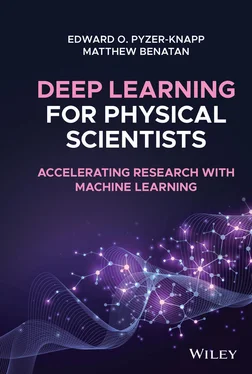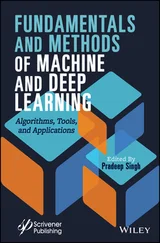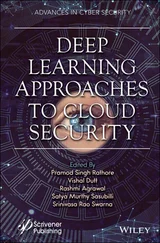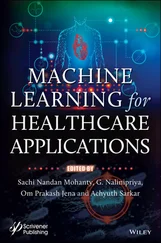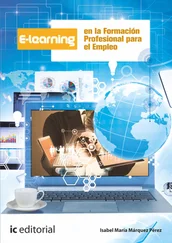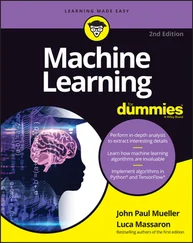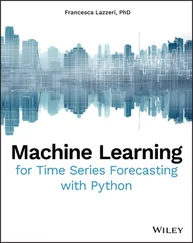1 Cover
2 Title Page
3 Copyright Page
4 About the Authors
5 Acknowledgements
6 1 Prefix – Learning to “Think Deep” 1.1 So What Do I Mean by Changing the Way You Think?
7 2 Setting Up a Python Environment for Deep Learning Projects2.1 Python Overview 2.2 Why Use Python for Data Science? 2.3 Anaconda Python 2.4 Jupyter Notebooks
8 3 Modelling Basics3.1 Introduction 3.2 Start Where You Mean to Go On – Input Definition and Creation 3.3 Loss Functions 3.4 Overfitting and Underfitting 3.5 Regularisation 3.6 Evaluating a Model 3.7 The Curse of Dimensionality 3.8 Summary
9 4 Feedforward Networks and Multilayered Perceptrons4.1 Introduction 4.2 The Single Perceptron 4.3 Moving to a Deep Network 4.4 Vanishing Gradients and Other “Deep” Problems 4.5 Improving the Optimisation 4.6 Parallelisation of learning 4.7 High and Low‐level Tensorflow APIs 4.8 Architecture Implementations 4.9 Summary 4.10 Papers to Read
10 5 Recurrent Neural Networks5.1 Introduction 5.2 Basic Recurrent Neural Networks 5.3 Long Short‐Term Memory (LSTM) Networks 5.4 Gated Recurrent Units 5.5 Using Keras for RNNs 5.6 Real World Implementations 5.7 Summary 5.8 Papers to Read
11 6 Convolutional Neural Networks6.1 Introduction 6.2 Fundamental Principles of Convolutional Neural Networks 6.3 Graph Convolutional Networks 6.4 Real World Implementations 6.5 Summary 6.6 Papers to Read
12 7 Auto‐Encoders7.1 Introduction 7.2 Getting a Good Start – Stacked Auto‐Encoders, Restricted Boltzmann Machines, and Pretraining 7.3 Denoising Auto‐Encoders 7.4 Variational Auto‐Encoders 7.5 Sequence to Sequence Learning 7.6 The Attention Mechanism 7.7 Application in Chemistry: Building a Molecular Generator 7.8 Summary 7.9 Real World Implementations 7.10 Papers to Read
13 8 Optimising Models Using Bayesian Optimisation8.1 Introduction 8.2 Defining Our Function 8.3 Grid and Random Search 8.4 Moving Towards an Intelligent Search 8.5 Exploration and Exploitation 8.6 Greedy Search 8.7 Diversity Search 8.8 Bayesian Optimisation 8.9 Summary 8.10 Papers to Read
14 Case Study 1: Solubility Prediction Case Study CS 1.1 Step 1 – Import Packages CS 1.2 Step 2 – Importing the Data CS 1.3 Step 3 – Creating the Inputs CS 1.4 Step 4 – Splitting into Training and Testing CS 1.5 Step 5 – Defining Our Model CS 1.6 Step 6 – Running Our Model CS 1.7 Step 7 – Automatically Finding an Optimised Architecture Using Bayesian Optimisation
15 Case Study 2: Time Series Forecasting with LSTMs CS 2.1 Simple LSTM CS 2.2 Sequence‐to‐Sequence LSTM
16 Case Study 3: Deep Embeddings for Auto‐Encoder‐Based Featurisation
17 Index
18 End User License Agreement
1 Chapter 3 Table 3.1 A rule of thumb guide for understanding AUC‐ROC scores.
1 Chapter 3 Figure 3.1 Examples of ROC curves. Figure 3.2 Optimal strategy without knowing the distribution. Figure 3.3 Optimal strategy when you know 50% of galaxies are elliptical and... Figure 3.4 A graphical look at the bias–variance trade‐off. Figure 3.5 A flow chart for dealing with high bias or high‐variance situatio...Figure 3.6 Graphical representation of the holdout‐validation algorithm.Figure 3.7 The effects of different scales on a simple loss function topolog...
2 Chapter 4Figure 4.1 An overview of a single perceptron learning.Figure 4.2 The logistic function.Figure 4.3 Derivatives of the logistic function.Figure 4.4 How learning rate can affect the training, and therefore performa...Figure 4.5 A schematic of a multilayer perceptron.Figure 4.6 Plot of ReLU activation function.Figure 4.7 Plot of leaky ReLU activation function.Figure 4.8 Plot of ELU activation function.Figure 4.9 Bias allows you to shift the activation function along the X ‐axis...Figure 4.10 Training vs. validation error.Figure 4.11 Validation error from training model on the Glass dataset.
3 Chapter 5Figure 5.1 A schematic of a RNN cell. X and Y are inputs and outputs, respec...Figure 5.2 Connections in a feedforward layer in an MLP (a) destroy the sequ...Figure 5.3 An example of how sequential information is stored in a recurrent...Figure 5.4 A schematic of information flow through an LSTM cell. As througho...Figure 5.5 An LSTM cell with the flow through the forget gate highlighted.Figure 5.6 An LSTM cell with the flow through the input gate highlighted.Figure 5.7 An LSTM cell with the flow through the output gate highlighted.Figure 5.8 An LSTM cell with peephole connections highlighted.Figure 5.9 A schematic of information flow through a GRU cell. Here, X refer...
4 Chapter 6Figure 6.1 Illustration of convolutional neural network architecture.Figure 6.2 Illustration of average and max pooling algorithms.Figure 6.3 Illustration of average and max pooling on face image.Figure 6.4 Illustration of average and max pooling on handwritten character ...Figure 6.5 Illustration of the effect of stride on change in data volume.Figure 6.6 Illustration of stride.Figure 6.7 Illustration of the impact of sparse connectivity on CNN unit's r...Figure 6.8 Illustration of graph convolutional network.Figure 6.9 Example graph.Figure 6.10 Example adjacency matrix.
5 Chapter 7Figure 7.1 A schematic of a shallow auto‐encoder.Figure 7.2 Representing a neural network as a stack of RBMs for pretraining....Figure 7.3 Training an auto‐encoder from stacked RBMs. (1) Train a stack of ...Figure 7.4 Comparison of standard auto‐encoder and variational auto‐encoder....Figure 7.5 Illustration of sequence to sequence model.
6 Chapter 8Figure 8.1 Schematic for greedy search.Figure 8.2 Bayes rule.
1 Cover Page
2 Title Page
3 Copyright Page
4 About the Authors
5 Acknowledgements
6 Table of Contents
7 Begin Reading
8 Index
9 Wiley End User License Agreement
1 iii
2 iv
3 xi
4 xii
5 1
6 2
7 3
8 5
9 6
10 7
11 8
12 9
13 10
14 11
15 12
16 13
17 14
18 15
19 16
20 17
21 18
22 19
23 20
24 21
25 22
26 23
27 24
28 25
29 26
30 27
31 28
32 29
33 30
34 31
35 32
36 33
37 34
38 35
39 36
40 37
41 38
42 39
43 41
44 42
45 43
46 44
47 45
48 46
49 47
50 48
51 49
52 50
53 51
54 52
55 53
56 54
57 55
58 56
59 57
60 58
61 59
62 60
63 61
64 62
65 63
66 64
67 65
68 66
69 67
70 68
71 69
72 70
73 71
74 72
75 73
76 74
77 75
78 77
79 78
80 79
81 80
82 81
83 82
84 83
85 84
86 85
87 86
88 87
89 88
90 89
91 90
92 91
93 92
94 93
95 94
96 95
97 96
98 97
99 98
100 99
101 100
102 101
103 102
104 103
105 104
106 105
107 106
108 107
109 108
110 109
111 110
112 111
113 112
114 113
115 114
116 115
117 116
118 117
119 118
120 119
121 120
122 121
123 122
124 123
125 124
126 125
127 126
128 127
129 128
130 129
131 130
132 131
133 132
134 133
135 134
136 135
137 136
138 137
139 138
140 139
141 140
142 141
143 142
144 143
145 144
146 145
Читать дальше
